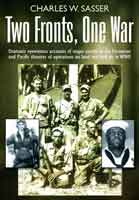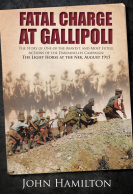Dropping the Atomic Bomb on Hirohito and Hitler (Hardback)
What Might Have Happened if the A-Bomb Had Been Ready Early

Pages: 288
Illustrations: 32 mono illustrations
ISBN: 9781399093156
Published: 24th January 2022
(click here for international delivery rates)
Order within the next 4 hours, 15 minutes to get your order processed the next working day!
Need a currency converter? Check XE.com for live rates
| Other formats available - Buy the Hardback and get the eBook for £1.99! | Price |
|---|---|
| Dropping the Atomic Bomb on Hirohito… ePub (18.0 MB) Add to Basket | £6.99 |
On 2 August 1939, the renowned theoretical physicist Albert Einstein wrote a letter to President Roosevelt in which he declared that ‘it might become possible to set up a nuclear chain reaction in a large mass of uranium’. He went on to declare that ‘extremely powerful bombs of a new type may thus be constructed’. But it was more than two years later, after Pearl Harbor, that Roosevelt established the project to develop the bomb as a top priority. The funds for what came to be called the Manhattan Project were so deeply concealed in the new Congressionally-authorized monies that no member of Congress had any notion of what was being developed. However, one Senator, a future US President, almost uncovered the secret. But what if actual events had taken a different course?
Presented as a thoroughly researched and referenced account of events during and after WW2, Dropping The Atomic Bomb on Hirohito and Hitler is history as it might have been, but for a single-point, root counterfactual change early in the war: the appointment of a different chair of the Americans’ Uranium Committee. The text recounts that under a different leader, the bomb could have been available sooner. Citing sources including some of the leading scientists on the project, the author shows that getting the bomb project going was more a matter of organization and determination than of scientific discovery, and could have produced a bomb substantially earlier.
What if the atomic bomb had been ready for deployment in, say, February 1945? How would this have affected the war in Europe, and in particular Germany’s surrender? What would the impact have been in the war in the Pacific against Imperial Japan, and how would the Soviets have reacted? And what would the following Cold War have looked like? These are all questions and scenarios that the author rigorously examines.
Solidly based on real people and actual events, in this book James Mangi describes the Manhattan Project to build the atom bomb getting an earlier start after President Roosevelt appointed an energetic scientist, Walter Mendenhall, (who was indeed qualified and available) to study the feasibility of the bomb, instead of the more traditional bureaucrat, Lyman Briggs, whom he actually chose. This scenario, he reveals, might well have produced a war-ending atomic bomb earlier, with the effects rippling through the post-war world.
Also included are several “counter-counterfactual” discussions: from the perspective of the early bomb alternative history, the author presents “speculations” of how different history would have been if the bomb had come later.
“I liked the speculation and the reasoning behind them.”
The Historical Miniatures Gaming Society
Review as featured in
After Action Report Newsletter, August 2023
Sometimes it's interesting to speculate on what might have happened... This is a terrifying alternative history which saw the allied forces deploy the atom bomb on Japan and the Nazis. Utterly fascinating.
Books Monthly
An enjoyable read, with the added bonus of a 'what really happened' section so that you can compare and contrast. Also some helpful maps and some very good photographs.
Army Rumour Service (ARRSE)
Read the full review here
Rating: 5 out of 5 stars
NetGalley, CASPER HILEMAN
Mr. Mangi has done due diligence on the history of the event with the aim of supposing what if. What if The United States dropped the Atomic Bomb on both The Empire of Japan as well as Nazi Germany. Well worth the read.
I can recommend Jim Mangi's research as an engaging look at WWII and post-WWII years and a guide for historical fiction writers. The what-ifs have the potential for further development into full-scale stories.
NetGalley, Darya Silman
Rating: 5 out of 5 stars
NetGalley, Katherine Wehrle
A fascinating read the dives into the possibility of how things may have turned out if the atomic bomb had been developed a little faster. Peppered with insightful side stories about discoveries that resulted from the research that went into the creation of this awesome destructive tool, it is difficult to put down. Author gives insights into what various parties of the Axis and Allied powers knew and what they assumed about each other. A great read for any WWII buffs.
It is a fascinating near alternate history looking at what might have happened had atomic weapons been ready earlier and in greater quantities than was actually the case in our timeline. The title gives this away in its reference to the atomic bombing of Germany as well as Japan. I found it interesting in that it confronts the reader with the very real pressures that drove the Manhattan Project to its eventual conclusion and looks at the consequences for the world had bombs been dropped on both Germany and Japan, months before they were ready in our timeline. It is always fun to speculate, and more than that it often opens our eyes to new approaches to what actually did happen in history as we know it. The text is occasionally a bit dry but often illuminating in unexpected ways and both the casual reader and the lay historian can expect to be entertained and sometimes startled by the author's conclusions.
NetGalley, William Harris
As featured in
The Bookseller 08/10/21
About Jim Mangi
After somewhat accidentally volunteering for, and serving in Vietnam, JIM MANGI earned a PhD in ecology and spent 40 years in the professional “What If?” business. The consulting firm he built traced the effects of planned projects on the environment and communities. Besides civil projects like power plants and factories, he worked on military projects ranging from battle tanks, to combat aircraft, to ICBM’s and space vehicles, some of which he can talk about. Jim now lives in Michigan, USA where he chairs Dementia Friendly Saline and is a caregiver for his wife.
















